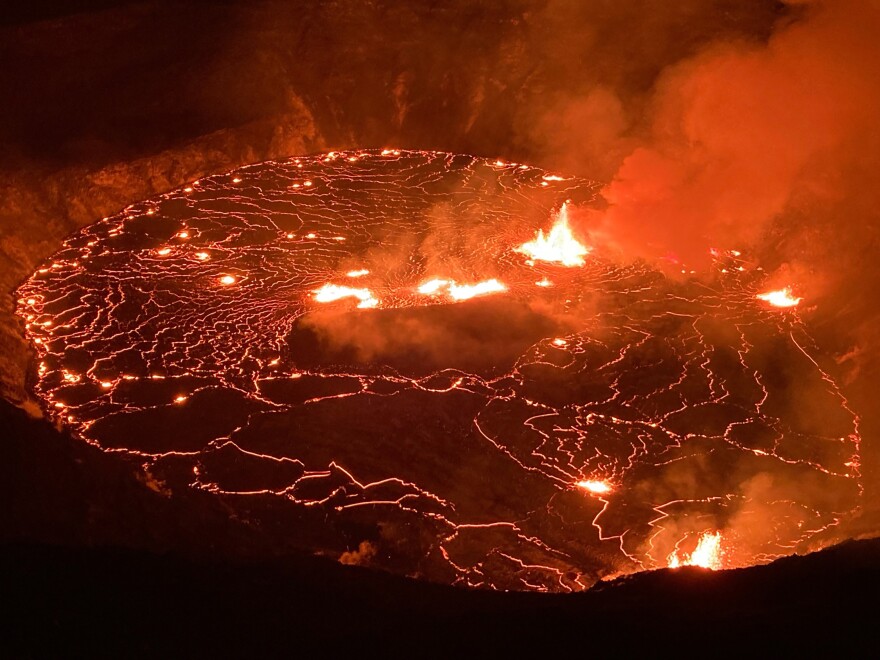Halemaʻumaʻu crater at the summit of Kīlauea volcano started erupting again on Wednesday afternoon, the United States Geological Survey said.
The Hawaiian Volcano Observatory said the eruption began around 3:20 p.m. and lava has only been observed on the surface of the lava lake. The eruption is not in an area with homes and is entirely contained within Hawaiʻi Volcanoes National Park.
"The opening phases of eruptions are dynamic and uncertain. HVO continues to monitor the volcano closely and will report any significant changes in future notices," the USGS said.
The volcano's alert level has been raised to "warning” and the aviation code changed to red.

This comes after scientists observed increased earthquake activity and ground deformations earlier Wednesday. There were at least 17 small earthquakes in the region over the past day.
Hawaiʻi Volcanoes National Park spokesperson Jessica Ferracane told The Associated Press that she had not yet arrived at the park, but that colleagues reported seeing some lava spatter and glow within the summit crater.
"The park is open and there are no road closures at this time," Ferracane said.
Ferracane added that officials are expecting tens of thousands of visitors to flock into the park and that people need to be very careful both in terms of natural hazards and COVID-19.
“This eruption is going to draw many people to the park, we're already seeing people come into the park, drive in after dark tonight,” Ferracane said. “Really need people to remember that we are in the middle of a pandemic and they need to stay safe and to keep us safe, too.”
She said people must maintain six feet of distance and wear masks.
“If you're sick, please don't come. Come visit another day. Enjoy the views from the webcam,” she said. “We really want to not have these current eruption conditions increase the spread of COVID.”

The volcano was last erupting from December 2020 to May 2021.
From 1983 to 2018, Kīlauea erupted almost continuously, in some cases sending streams of lava that covered farms and homes. At the end of this decades-long eruption, Kilauea spewed lava from vents in a residential neighborhood on its eastern flank and destroyed more than 700 homes.





